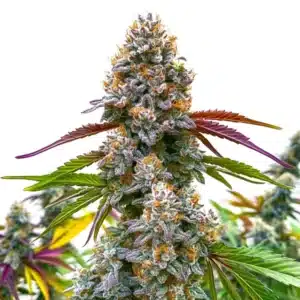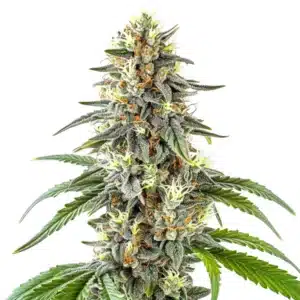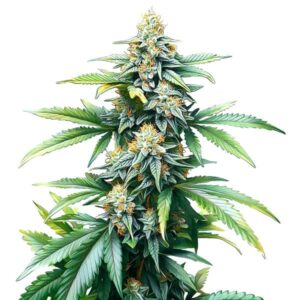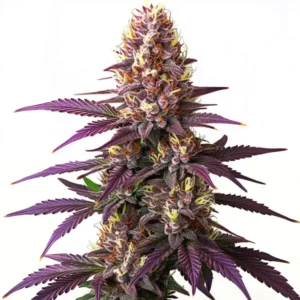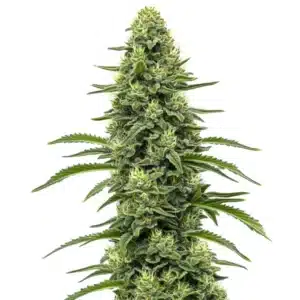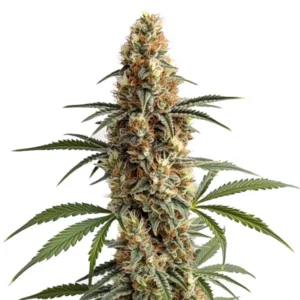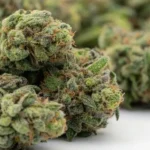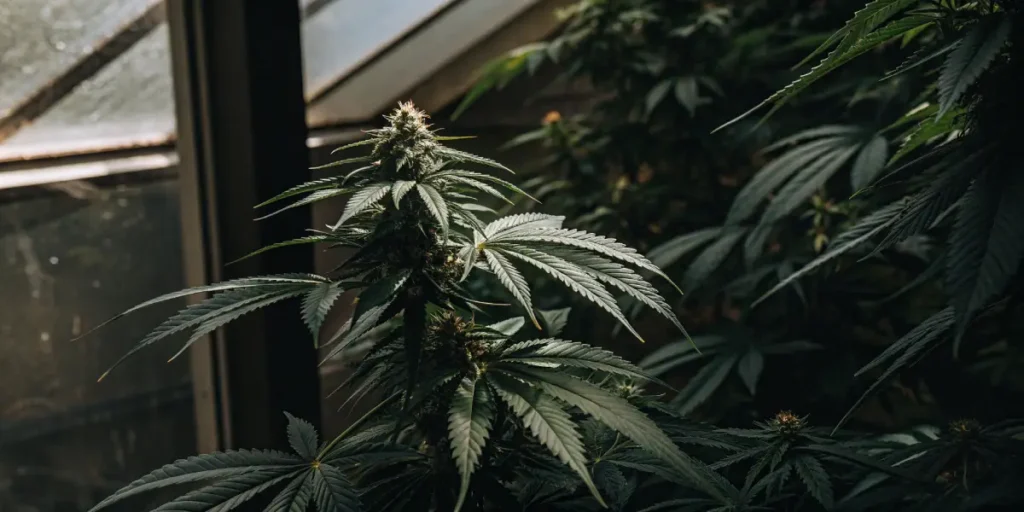
Is Apical Dominance Good or Bad for Cannabis?
Apical dominance plays a crucial role in the way your cannabis plants grow. This phenomenon occurs when the main central stem of the plant grows more vigorously than the side branches. This is due to the tip of the plant releasing hormones that suppress the growth of lateral shoots. Many growers wonder, is apical dominance good or bad for cannabis? The answer isn’t always straightforward.
For first-time cannabis seed buyers and seasoned growers, understanding dominance in plant growth is key to optimizing cannabis cultivation. The benefits of this dominance for cannabis growth can be significant, leading to a taller plant that efficiently uses light. However, there are also downsides like the potential for reduced yields if not managed properly. So, is dominance in cannabis growth harmful to yields? It can be, but it depends on how you manage it.
Recommended Strains
GG4
|
|
THC | 27% (High) |
|
|
Type | Feminized |
|
|
Yield | High |
|
|
Phenotype | 40% Indica / 60% Sativa |
Critical Daddy Purple
|
|
THC | 19% (Medium) |
|
|
Type | Feminized |
|
|
Yield | High |
|
|
Phenotype | 50% Indica / 50% Sativa |
Let’s delve into the effects of this growth pattern on cannabis plant health and explore whether it is beneficial or detrimental. We’ll also discuss how you can optimize cannabis growth by managing dominance effectively.
Apical Dominance Benefits for Cannabis Growth
One of the main apical dominance benefits for cannabis growth is the ability to maximize light exposure. The central stem grows taller, potentially allowing it to reach more light compared to other branches. This can be advantageous in indoor growing setups where light is limited.
Another benefit is the structural strength that a dominant central stem provides. A strong main stem can support heavier buds, which is especially important for strains known for producing dense flowers, like the Gorilla Glue 4 strain from Blimburn Seeds. This strain thrives under conditions where apical dominance is managed well.
Besides to light exposure and structural strength, apical dominance benefits for cannabis growth through improved nutrient distribution. By focusing energy on the main stem, the plant may more efficiently allocate resources to crucial areas, supporting robust development. This targeted growth strategy often results in plants that are not only taller but also healthier and more resilient.
Furthermore, dominance can help in maintaining a cleaner plant profile. With fewer lateral branches, the plant can reduce the risk of pest infestations and diseases that thrive in dense foliage. This streamlined growth habit is especially useful in crowded growing environments, where air circulation can be a challenge. Thus, dominance impact on cannabis cultivation success cannot be overlooked.
Promos & Deals
Is Apical Dominance Harmful to Cannabis Yields?
While there are benefits, some argue that apical dominance is harmful to cannabis yields. When the main stem dominates, it can limit the growth of lateral branches. This can lead to fewer flowering sites and, consequently, decreased yields. This is particularly a concern in outdoor grows where space and sunlight are abundant.
However, by controlling apical dominance, such as through pruning techniques like topping or fimming, you can encourage the plant to grow more lateral branches. This can increase the number of bud sites and potentially improve yields. For example, the Critical Daddy Purple strain from Blimburn Seeds responds well to these techniques, producing a bushier plant with more flowers.
Another perspective on whether dominance is harmful to cannabis yields involves evaluating plant variety and specific cultivation goals. Certain strains naturally exhibit strong dominance, and growers aiming for a single large cola may find this beneficial. However, if maximizing yield is the primary goal, strategies to mitigate dominance, such as training or pruning, are essential.
Additionally, environmental factors play a significant role. In settings where resources like light and nutrients are limited, unchecked dominance may exacerbate competition among branches, leading to reduced overall plant vigor. Knowing these dynamics is crucial for growers questioning, “is dominance good or bad for cannabis?”
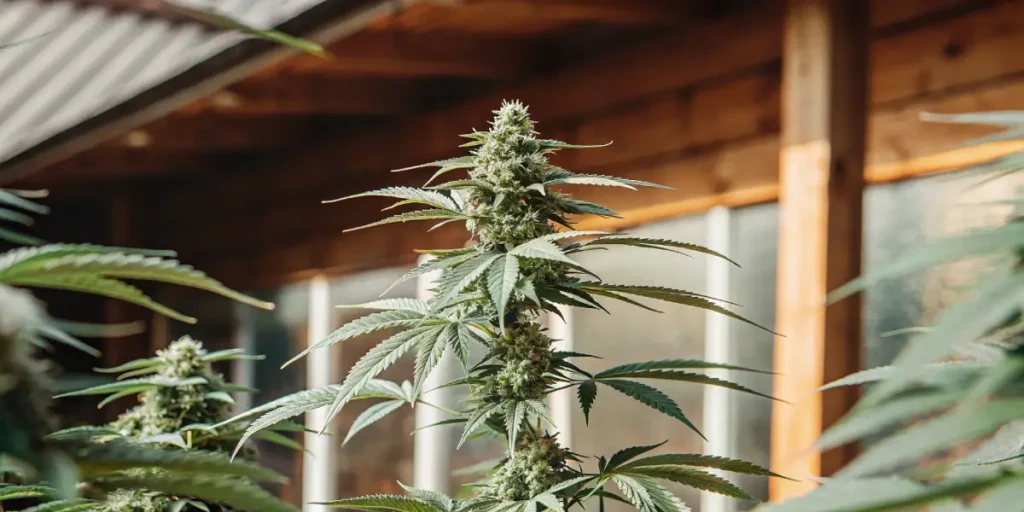
Effects of Apical Dominance on Cannabis Plant Health
The effects of apical dominance on cannabis plant health can be both positive and negative. On the positive side, a strong central stem can enhance the plant’s ability to withstand harsh conditions, like strong winds or heavy rain. This is particularly beneficial for outdoor growers.
On the downside, if left unchecked, dominance can lead to a lanky plant with poor light distribution, affecting lower branches. This can result in poor bud development in shaded areas. It’s crucial to maintain a balance to ensure all parts of the plant receive adequate light.
Moreover, the effects of this dominance on cannabis plant health are evident in the plant’s overall stress tolerance. A well-managed dominant stem can reduce the incidence of physical damage during handling and transplanting, as it provides a stable foundation. This stability is beneficial during the crucial flowering phase, where structural integrity is paramount.
Conversely, poor management of apical dominance can lead to nutrient deficiencies in the lower parts of the plant. When the main stem draws too much energy, other parts may suffer, resulting in weaker growth and susceptibility to diseases. Thus, the question of “is apical dominance good or bad for cannabis” hinges on effective management practices.
Optimizing Cannabis Growth by Managing Apical Dominance
Optimizing cannabis growth by managing apical dominance involves understanding when and how to intervene. Pruning techniques like topping and fimming are common methods to control the main stem’s dominance. These techniques encourage the plant to grow more evenly, promoting a bushier structure.
Scrogging, or using a screen of green method, is another way to manage apical dominance. By spreading out the branches horizontally, you can ensure even light distribution. This is particularly useful for indoor growing where space is limited.
Timing is critical when considering how to optimize cannabis growth by managing apical dominance. Early interventions during the vegetative stage can set the plant up for a more productive flowering period, ensuring that energy is distributed evenly across potential bud sites. This strategic approach can lead to enhanced yields and healthier plants.
Furthermore, the integration of technology, such as automated light systems, can complement physical training methods. By adjusting light cycles and intensities, growers can further influence plant growth patterns, maximizing the apical dominance benefits for cannabis growth. This synergy between manual and technological methods can significantly boost cultivation success.
Practical Techniques for Managing Apical Dominance
Topping involves cutting the main stem, which promotes the growth of lateral branches. This technique can be used early in the plant’s life cycle to encourage a bushier shape. The Gorilla Glue 4 from Blimburn Seeds responds well to topping, resulting in increased yields.
Fimming is similar to topping but involves removing a smaller portion of the main stem. This can result in more branches and is less stressful to the plant. The Critical Daddy Purple strain benefits from fimming, allowing for multiple colas and increased flower production.
Low-stress training (LST) is another effective method for managing apical dominance. By gently bending and securing branches, growers can manipulate the plant’s shape and improve light penetration to lower regions. This method is less invasive and can be used in conjunction with topping or fimming for optimal results.
Besides to physical training, environmental management plays a role in practical techniques for managing apical dominance. Adjusting factors like humidity, temperature, and nutrient levels can support the plant’s overall health, enhancing the positive effects of structured growth interventions. These comprehensive strategies contribute to determining “is apical dominance good or bad for cannabis” in specific contexts.
- Maximize light exposure by controlling plant height.
- Use topping to encourage lateral growth and boost yield.
- Employ fimming for a less stressful approach to branching.
- Consider scrogging for even light distribution indoors.
- Experiment with low-stress training for healthier plants.
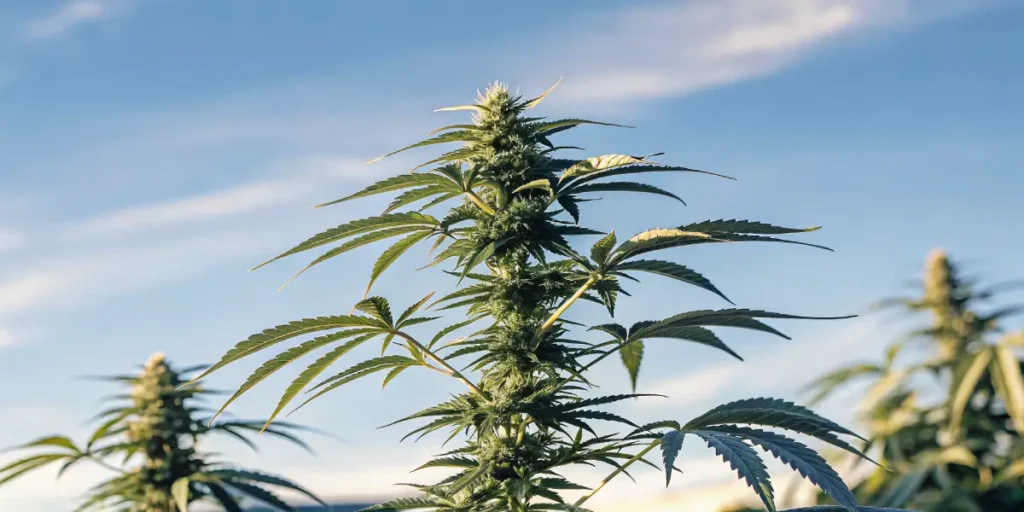
FAQs
What is Apical Dominance in Cannabis?
Apical dominance is a natural growth pattern where the main stem of a cannabis plant grows more vigorously than its side branches. This occurs because the apical bud produces hormones that suppress the growth of lateral buds. In cannabis, this can lead to a tall, single-cola structure.
Knowing apical dominance helps growers decide when to prune or train their plants for better yields. It’s a key concept for both novice and experienced growers looking to optimize their plants’ growth and health.
Grasping the concept of apical dominance is crucial for tailoring cultivation techniques to suit specific plant needs. This understanding allows growers to strategically influence plant architecture, enhancing both aesthetic and functional outcomes. By mastering this growth pattern, the question of “is apical dominance good or bad for cannabis” can be answered with confidence.
Additionally, apical dominance can influence the decision-making process regarding strain selection and environmental setup. By choosing strains that respond well to particular training methods, growers can maximize the apical dominance benefits for cannabis growth, ensuring a successful and rewarding cultivation experience.
Can Apical Dominance Affect Cannabis Yields?
Yes, apical dominance can affect cannabis yields. While it promotes strong central growth, it can limit the development of side branches, reducing the number of bud sites. This can lead to lower yields if not managed carefully.
Growers can mitigate this by applying techniques like topping or fimming to encourage lateral growth. These methods can turn a single-cola plant into a multi-cola one, potentially increasing the overall yield.
Moreover, the effects of apical dominance on cannabis plant health and yield are interconnected. A plant with well-managed apical dominance may exhibit not only increased yield but also improved quality of buds. This quality enhancement stems from better light distribution and air flow, reducing the risk of mold and other issues.
However, if apical dominance is not controlled, it may lead to uneven growth and energy distribution, resulting in compromised yields and plant health. Thus, continuously assessing and adjusting cultivation techniques is essential for achieving desired outcomes, answering the ongoing debate: is apical dominance good or bad for cannabis?
How Do You Manage Apical Dominance in Cannabis?
Managing apical dominance involves techniques like topping, fimming, and low-stress training. These methods modify the plant’s natural growth pattern to encourage more balanced growth and improve yields.
Timing is crucial when applying these techniques. Early intervention during the vegetative stage can set the foundation for a well-structured plant that maximizes light use and increases flower production.
Besides to timing, consistency in training methods is vital. Regularly monitoring plant growth and adjusting techniques as necessary ensures that apical dominance is managed effectively. This proactive approach is key to optimizing cannabis growth by managing apical dominance for desired results.
Furthermore, understanding the specific needs of each cannabis strain can inform the choice of management techniques. Adapting methods to align with strain characteristics enhances the apical dominance impact on cannabis cultivation success, providing a tailored approach that maximizes both yield and quality.
Is Apical Dominance Good or Bad for Cannabis Growth?
The impact of apical dominance on cannabis growth can be both good and bad. It is beneficial for creating a strong central stem, which can support heavy buds. However, it can also limit lateral growth if not managed, reducing potential yields.
By understanding and controlling apical dominance, growers can optimize their plants for better light exposure and increased bud sites, leading to healthier plants and higher yields.
For growers questioning “is apical dominance good or bad for cannabis,” the answer lies in the balance between natural growth tendencies and cultivation goals. While a dominant central stem can be advantageous, unchecked growth may hinder overall plant performance, particularly in environments where space and light are abundant.
Ultimately, the key to leveraging apical dominance benefits for cannabis growth is strategic intervention. Employing techniques like training and pruning at the right times can transform potential drawbacks into opportunities, optimizing both plant health and yield potential.
What Cannabis Strains Benefit from Managing Apical Dominance?
Certain cannabis strains can benefit significantly from managing apical dominance. Gorilla G4, Critical Daddy Purple, and Blue Dream from Blimburn Seeds are examples of strains that respond well to techniques like topping and LST.
These strains tend to produce better yields and healthier plants when growers actively manage their growth patterns. Properly applied techniques can lead to a more balanced plant structure, enhancing overall cultivation success.
Besides to the mentioned strains, other varieties with similar growth characteristics can also thrive under managed apical dominance. By selecting strains known for their responsiveness to training, growers can better ensure the apical dominance impact on cannabis cultivation success is positive.
Furthermore, understanding the genetic predispositions of these strains allows for more targeted intervention techniques, enhancing the overall cultivation process. This knowledge empowers growers to maximize the apical dominance benefits for cannabis growth, optimizing both yield and quality in diverse growing environments.



